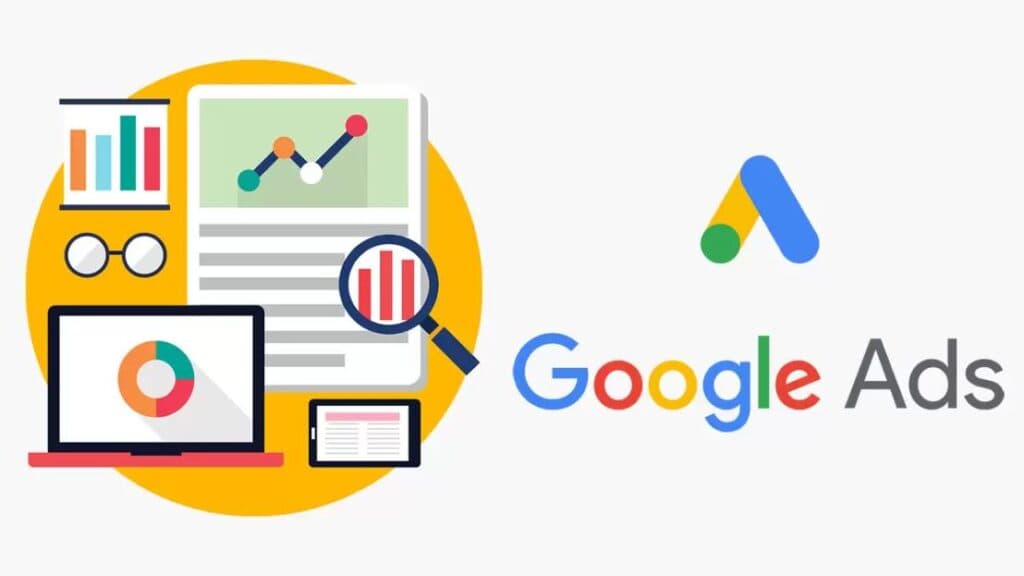“The Ultimate Guide to Google Display Ads: Types, Specs, and Best Practices”
As businesses seek ways to increase online visibility, Google Display Ads have become an indispensable tools for digital marketers. However, with many Google Ads types, choosing the best for your business needs can be overwhelming.
Types of Google Display Ads
In this comprehensive guide, we’ll break down the nine types of Google Ads, explaining their differences, strengths, and weaknesses, so you can make an informed decision and create a profitable advertising campaign.
Search Ads
Search Ads are the most common type of Google Ads. When users search for specific keywords, these ads are shown above or below the search engine results page (SERP). They are designed to attract potential customers to click on the ad and visit the advertiser’s website.
Display Ads
Display Ads are banner ads that appear on websites within the Google Display Network. These ads can be images, videos, or text and are shown to users who have previously shown an interest in the advertiser’s products or services.
Display ads use targeted advertising to display ads to users most likely to be interested in the advertiser’s products or services. This targeting can be based on a user’s search history, interests, demographics, and other factors.
Shopping Ads
Shopping Ads are specifically designed for e-commerce businesses. They appear at the top of the SERP and showcase products from online retailers. Shopping Ads are effective in driving traffic to online stores and increasing sales.
Video Ads
Video Ads are displayed on YouTube and can be skippable or non-skippable. They are an excellent way for businesses to showcase their products or services visually appealingly and target a specific audience based on their interests.
Businesses can use video ads to showcase their products or services creatively and engagingly. These ads can be targeted to specific demographics and interests, ensuring they are displayed to users most likely interested in the advertiser’s products or services.
App Ads
App Ads are displayed within other apps and designed to promote mobile apps. These ads are an excellent way for businesses to increase app downloads and user engagement.
App ads provide businesses with various targeting options, including device targeting, location targeting, and audience targeting, allowing companies to reach their ideal audience and achieve their advertising goals.
Responsive Ads
Responsive ads automatically adjust their size and format to fit the available ad space. They can appear on the Google Display Network, Google Search, and Discover. These ads are perfect for businesses that want to increase their reach and simplify their ad creation process.
Call-Only Ads
Call-Only Ads are designed to drive phone calls to the advertiser’s business. When users click on the ad, their phone automatically dials the business’s phone number. These ads are beneficial for companies relying on phone calls for sales.
Local Ads
Local Ads are targeted toward users who are searching for local businesses. These ads include a business’s address, phone number, and website. Local Ads are particularly effective for small businesses that want to attract local customers.
Local ads use targeted advertising to display ads to users who are most likely interested in the advertiser’s products or services and are located within a specific geographic area. This targeting can be based on a user’s location data, search history, interests, demographics, and other factors.
Hotel Ads
Hotel Ads are designed for the hospitality industry, specifically hotels, and resorts. They showcase the hotel’s availability, pricing, and amenities. Hotel Ads benefit hotels that want to increase direct bookings and reduce their reliance on online travel agencies (OTAs).
Hotel ads use targeted advertising to display ads to users most likely interested in the advertiser’s hotel based on their search history, location data, interests, and other factors. These ads can include information such as room availability, prices, reviews, and amenities.
Conclusion
Choosing the correct type of Google Ads can make a significant difference in the success of your advertising campaign. By understanding the differences between each class, you can create a tailored advertising strategy that reaches your target audience and achieves your business goals.
FAQs
What are Google display ads?
Google Display Ads is an online advertising platform offered by Google that allows businesses to display their ads on a wide range of websites and apps that are part of the Google Display Network. These ads can be images, videos, or text and are designed to attract potential customers to click on the ad and visit the advertiser’s website.
Google Display Ads uses targeted advertising to display ads to users most likely interested in the advertiser’s products or services. This targeting can be based on a user’s search history, interests, demographics, and other factors.
Google Display Ads provides businesses with various targeting options, including location, device, and audience targeting, allowing companies to reach their ideal audience and achieve their advertising goals.
Overall, Google Display Ads can be an effective way for businesses to increase their online visibility, reach their target audience, and achieve their advertising goals.
Where do Google display ads appear?
Google Display Ads can appear on many websites and apps that are part of the Google Display Network. This includes popular sites such as YouTube, Gmail, and Google Finance, as well as many other websites and apps that have partnered with Google to display ads. The Google Display Network reaches over 90% of internet users worldwide, making it a powerful tool for businesses to reach their target audience.
What are the two main formats of Google display ads?
The two main formats of Google Display Ads are image and responsive.
Image ads are static ads that can include images, text, and logos. These ads can be created in various sizes and placed on specific websites or throughout the entire Google Display Network. Image ads benefit businesses that want to showcase their brand or product visually appealingly.
On the other hand, responsive ads are dynamic ads that adjust their size, format, and appearance to fit the available ad space. Responsive ads can include text, images, and logos, and they can appear on various websites and apps within the Google Display Network. These ads are perfect for businesses that want to reach a broader audience and simplify their ad creation process.
Does google ads work?
Yes, Google Ads can be an effective way for businesses to reach their target audience and increase their online visibility. Google Ads allows businesses to target specific keywords and demographics, ensuring that their ads are displayed to potential customers more likely to be interested in their products or services.
Google Ads also provides businesses with valuable data and insights, such as click-through rates, conversion rates, and cost-per-click, which can help companies to optimize their advertising campaigns and achieve better results.
However, it’s important to note that Google Ads is just one component of a successful digital marketing strategy. Businesses need t well-designed website, a solid social media presence, and a clear understanding of their target audience to achieve long-term success. Additionally, Google Ads can be competitive, and businesses must have a clear strategy and budget to see the best results.
What are Search ads best for?
Search ads are best for businesses that want to reach potential customers actively searching for specific keywords related to their products or services. Search ads are displayed above or below the organic search results on the search engine results page (SERP) and are designed to attract users to click on the ad and visit the advertiser’s website.
Search ads are particularly effective for businesses that want to increase their online visibility and drive traffic to their website. They allow companies to target specific keywords and demographics, ensuring that their ads are displayed to users most likely interested in their products or services.
Search ads also provide businesses with valuable data and insights, such as click-through rates, conversion rates, and cost-per-click, which can help companies to optimize their advertising campaigns and achieve better results.
Overall, search ads are best for businesses that want to reach potential customers actively searching for specific keywords related to their products or services and who want to increase their online visibility and drive traffic to their websites.





